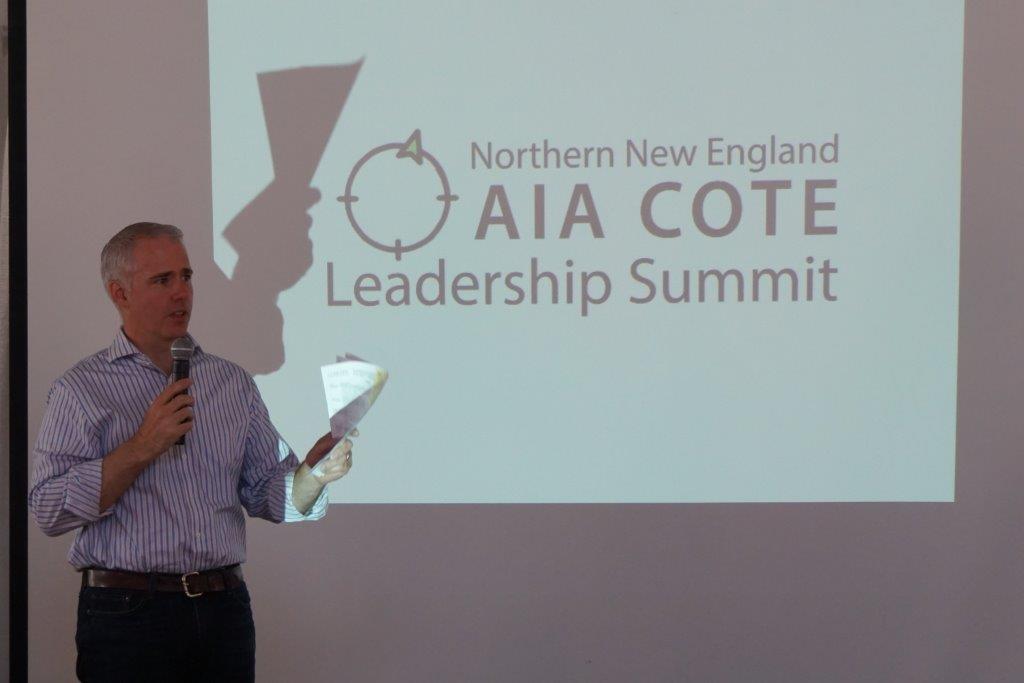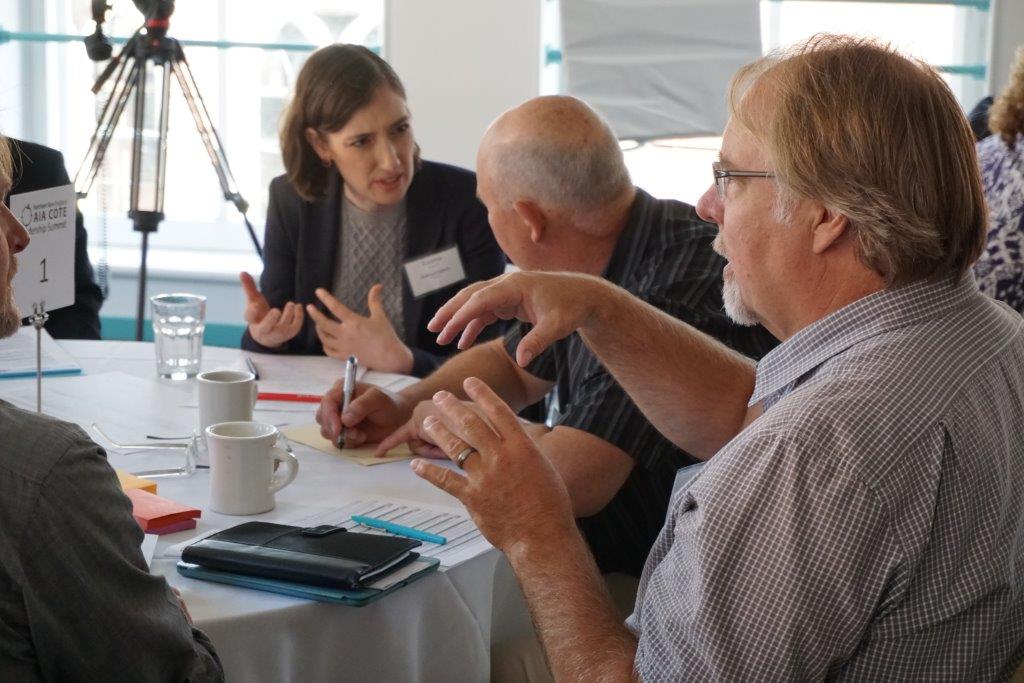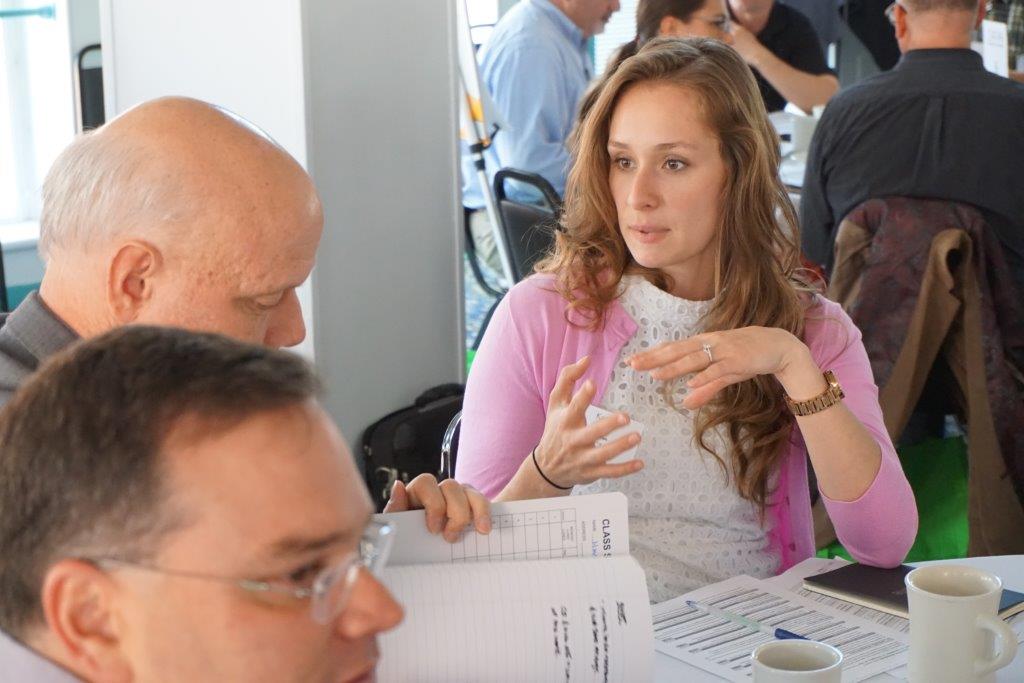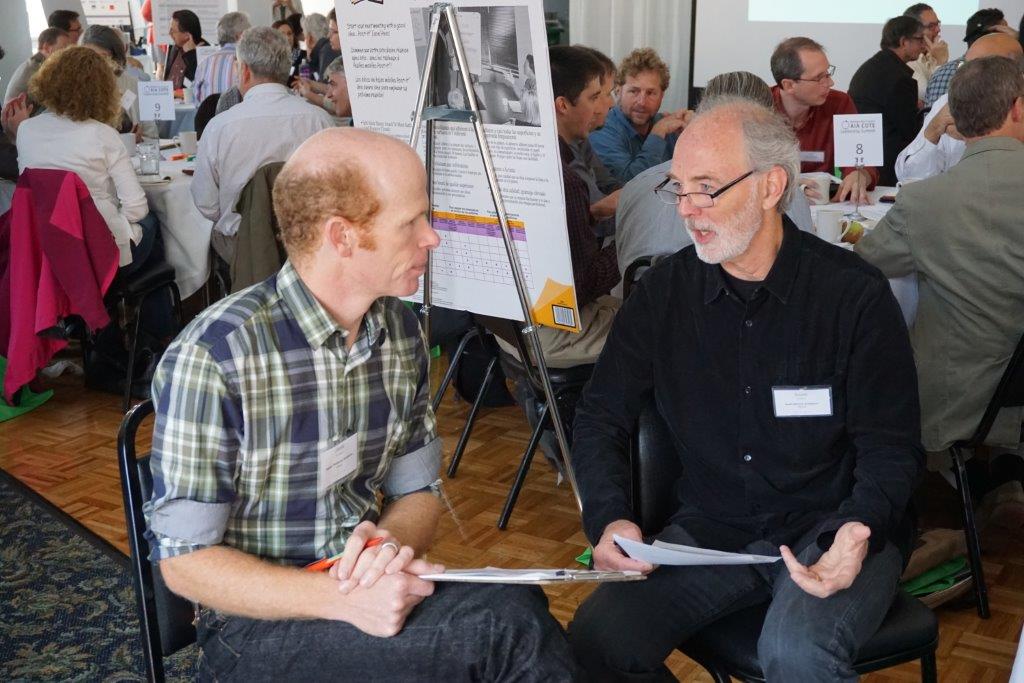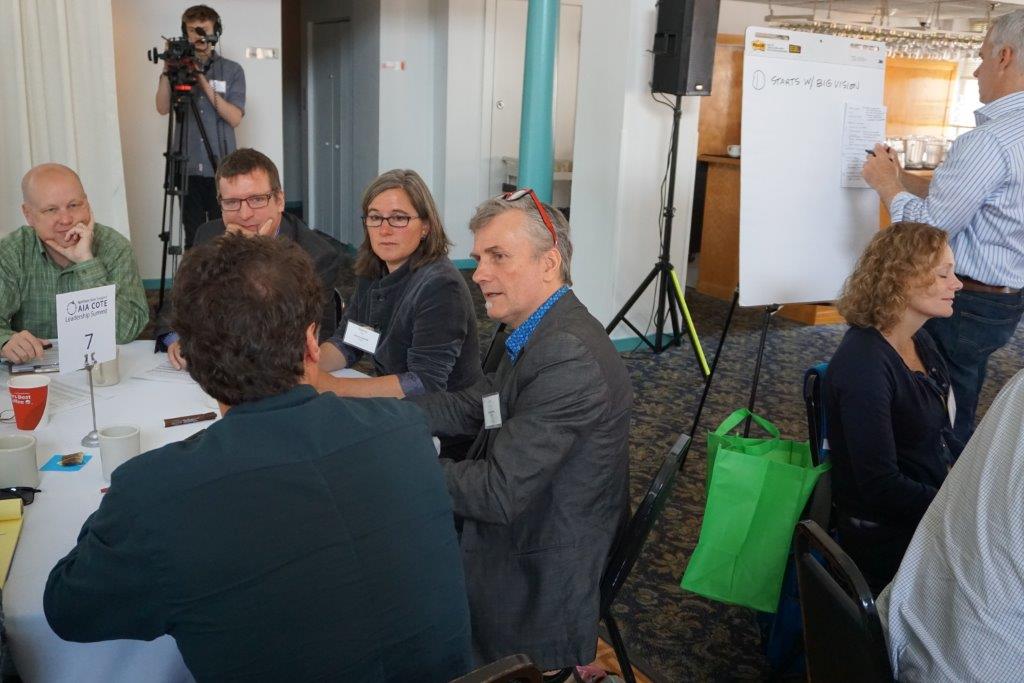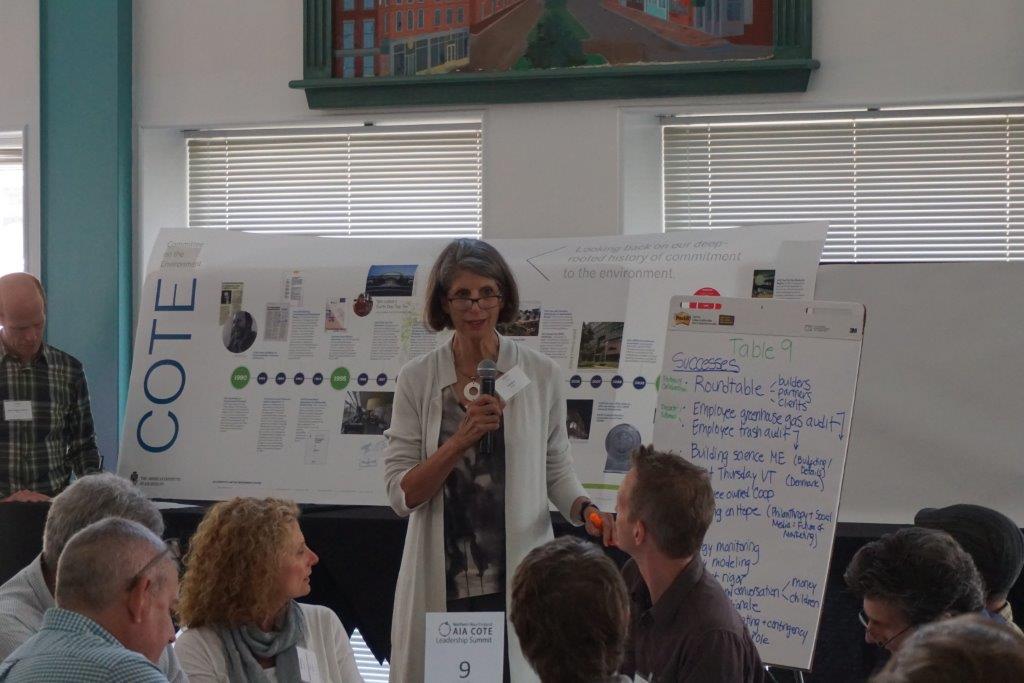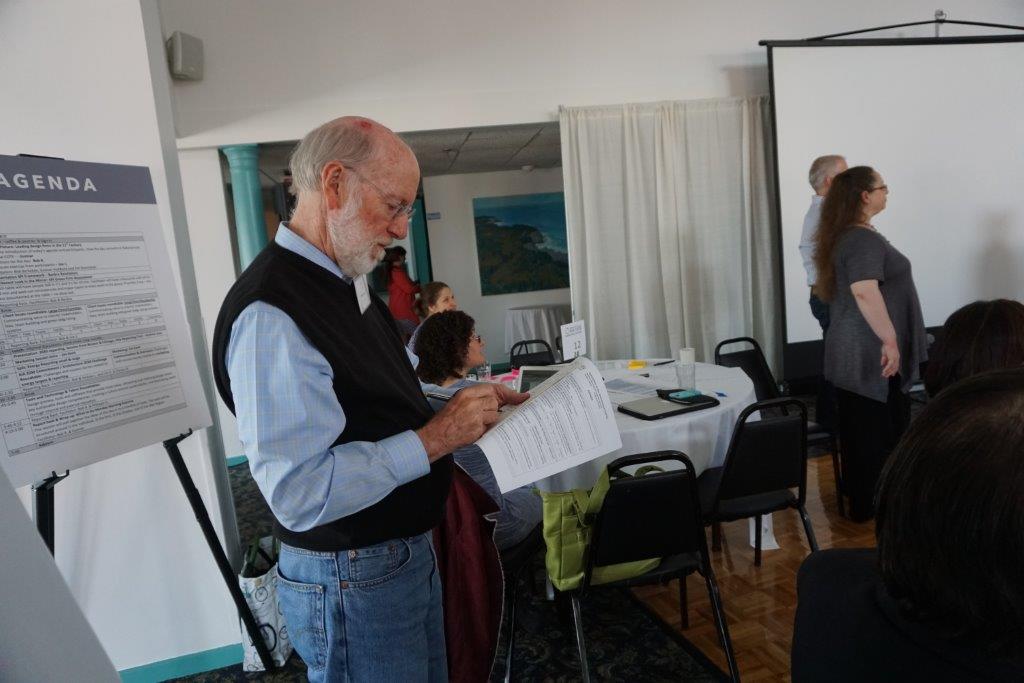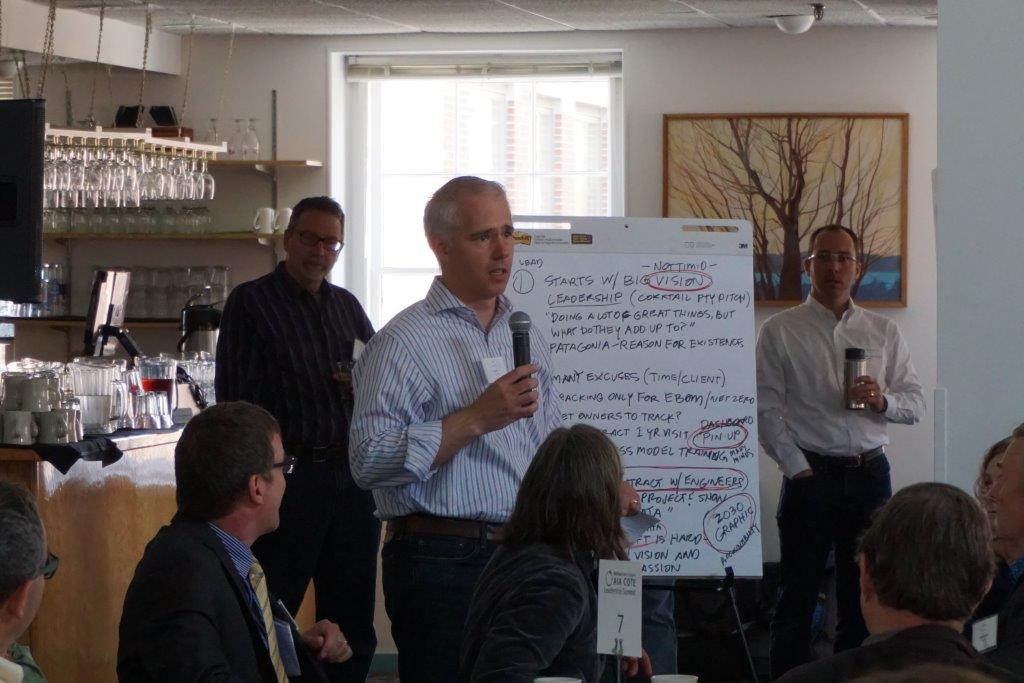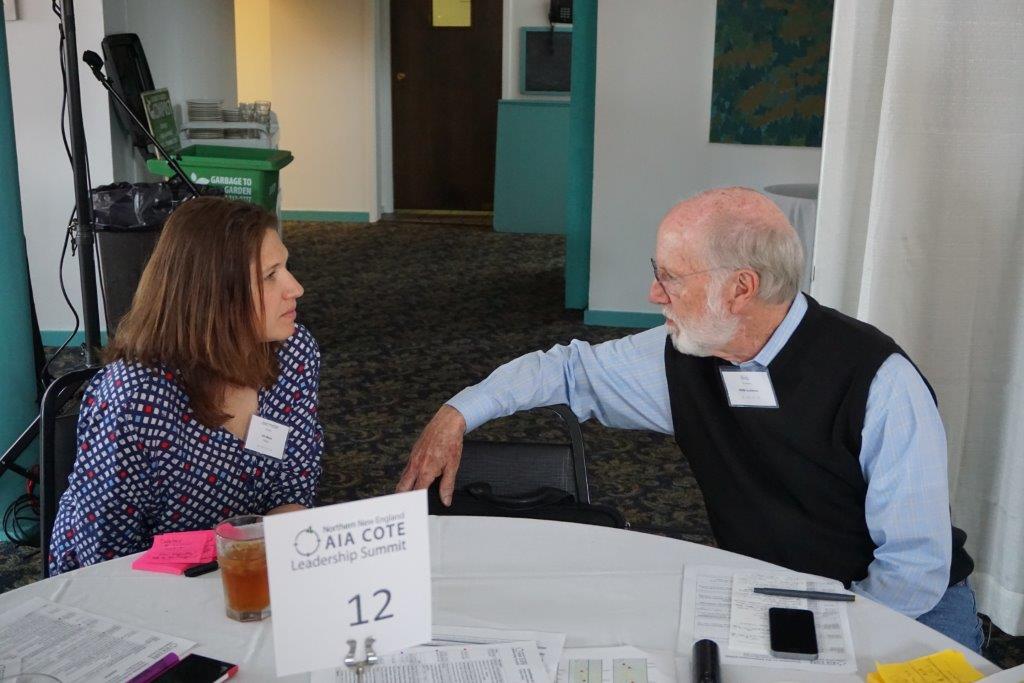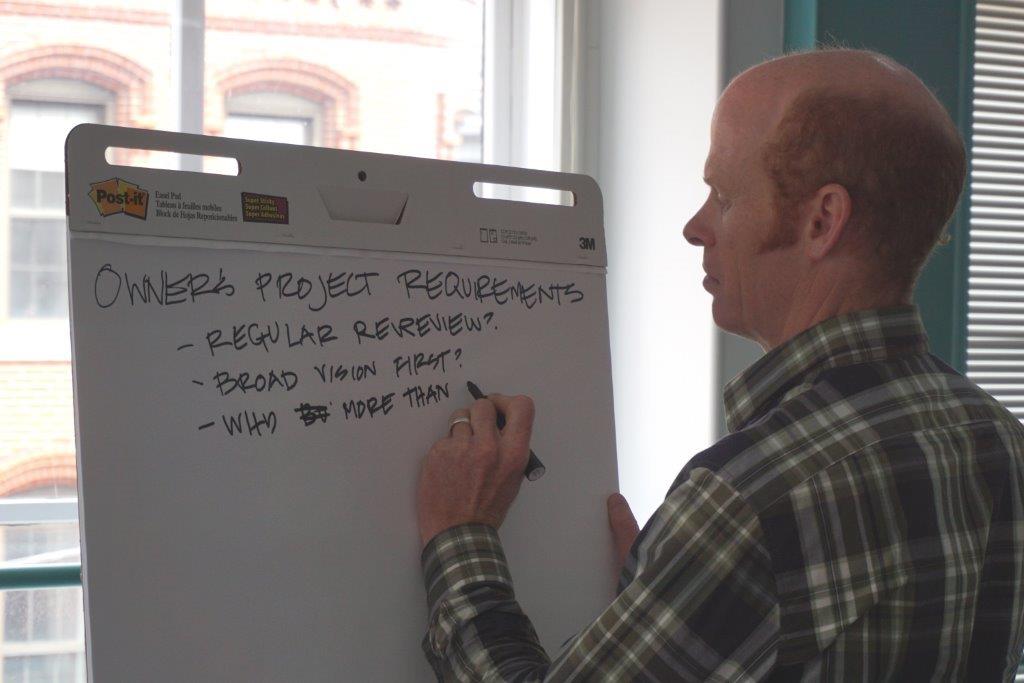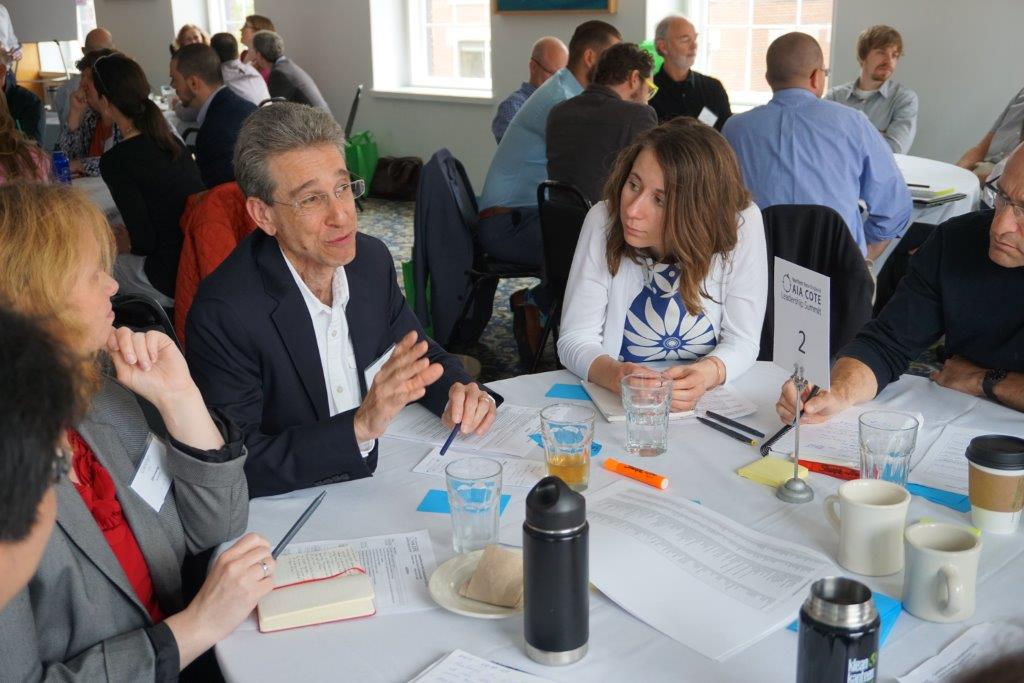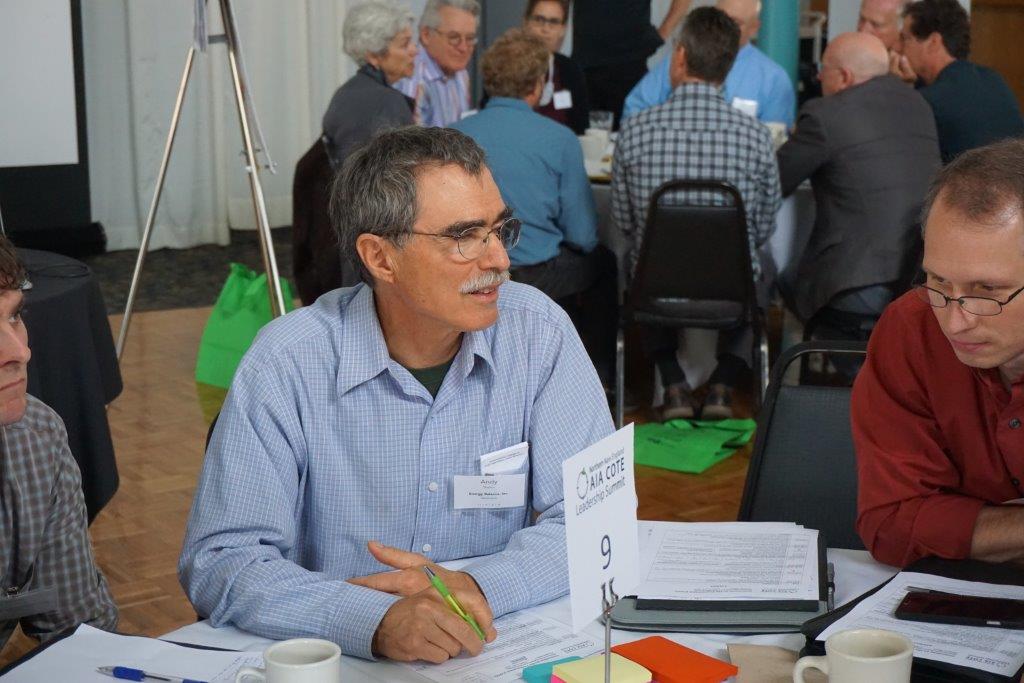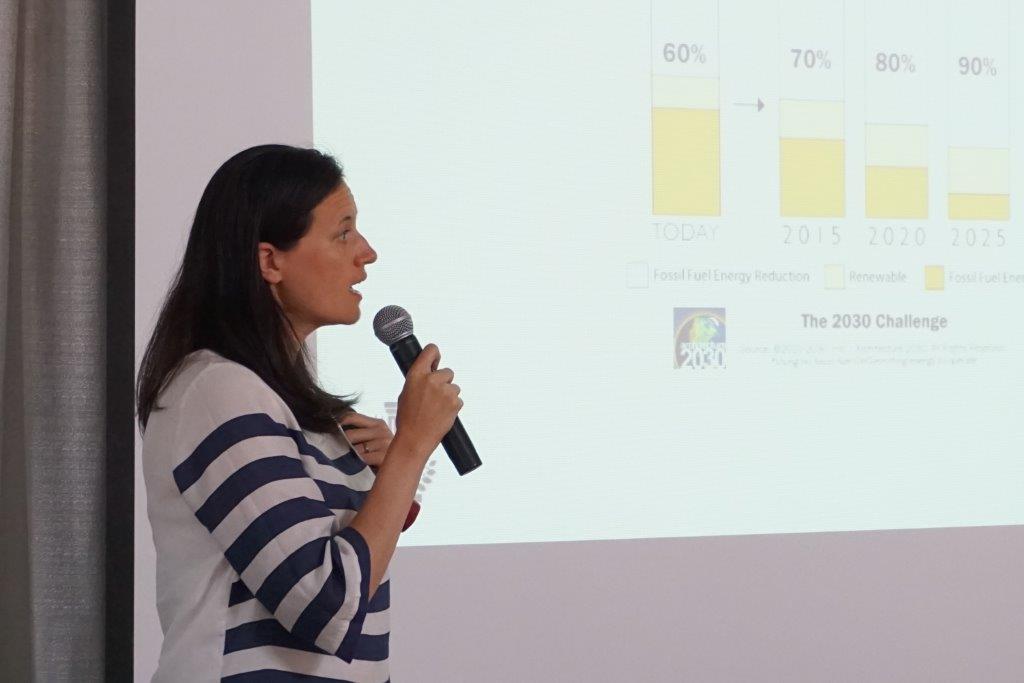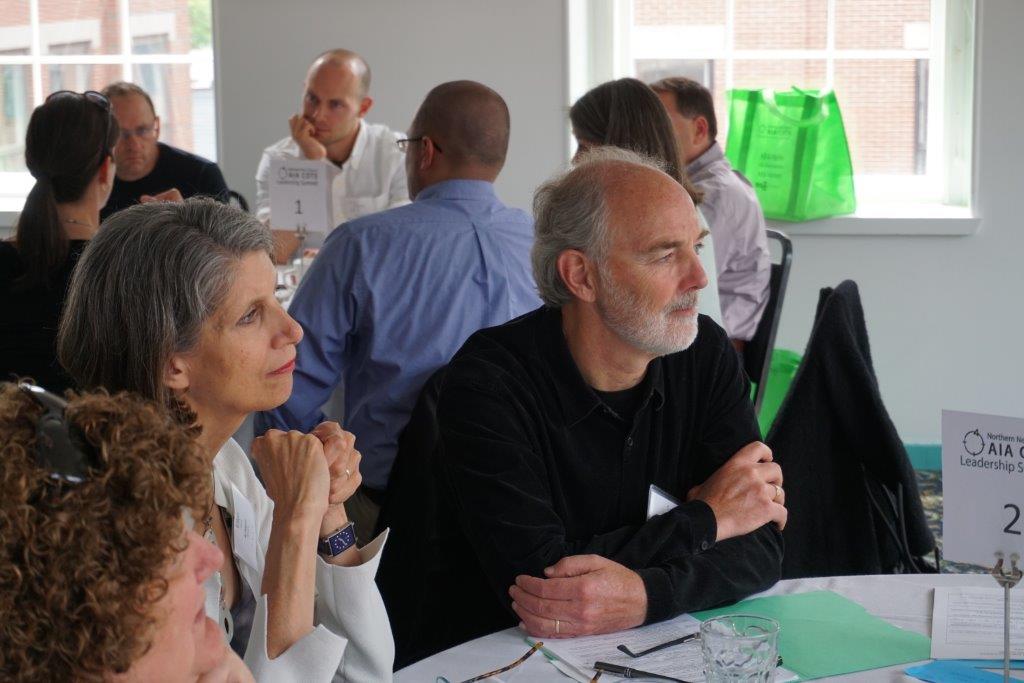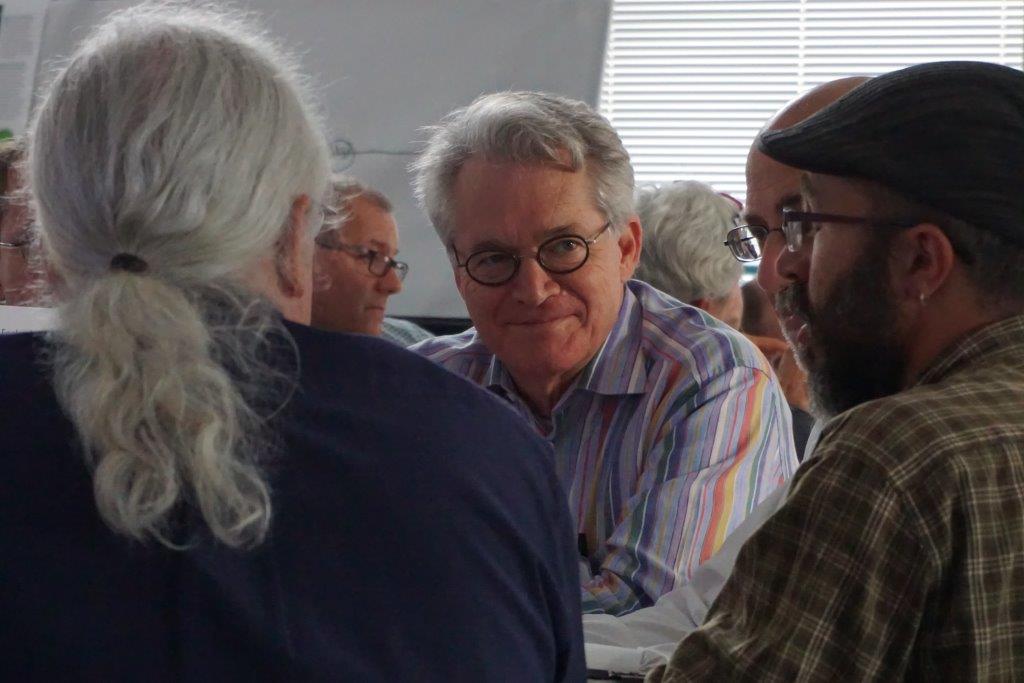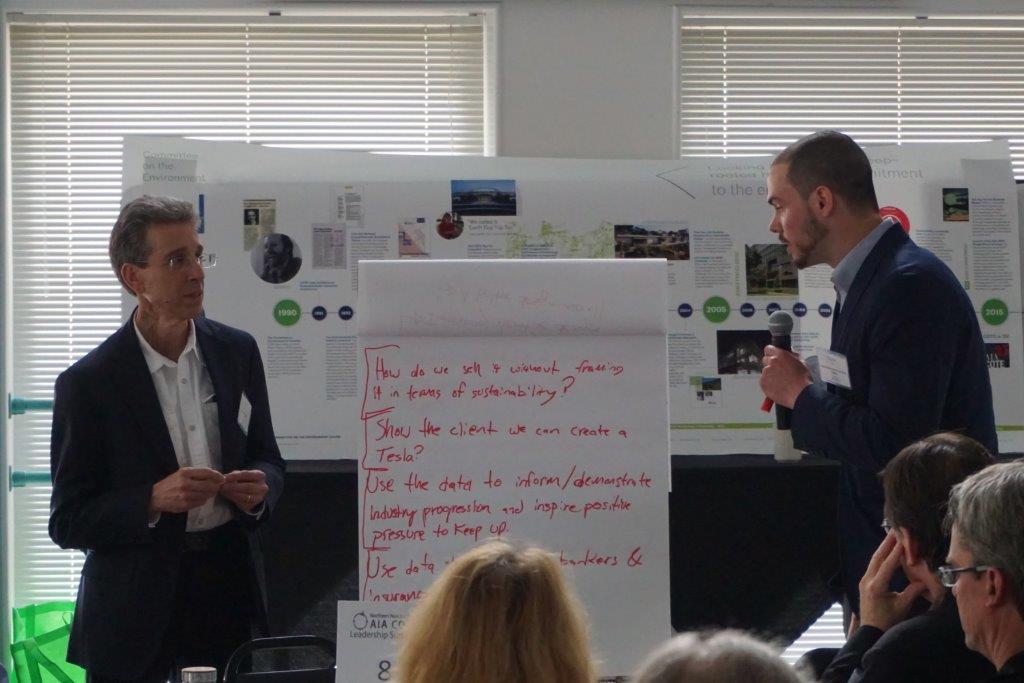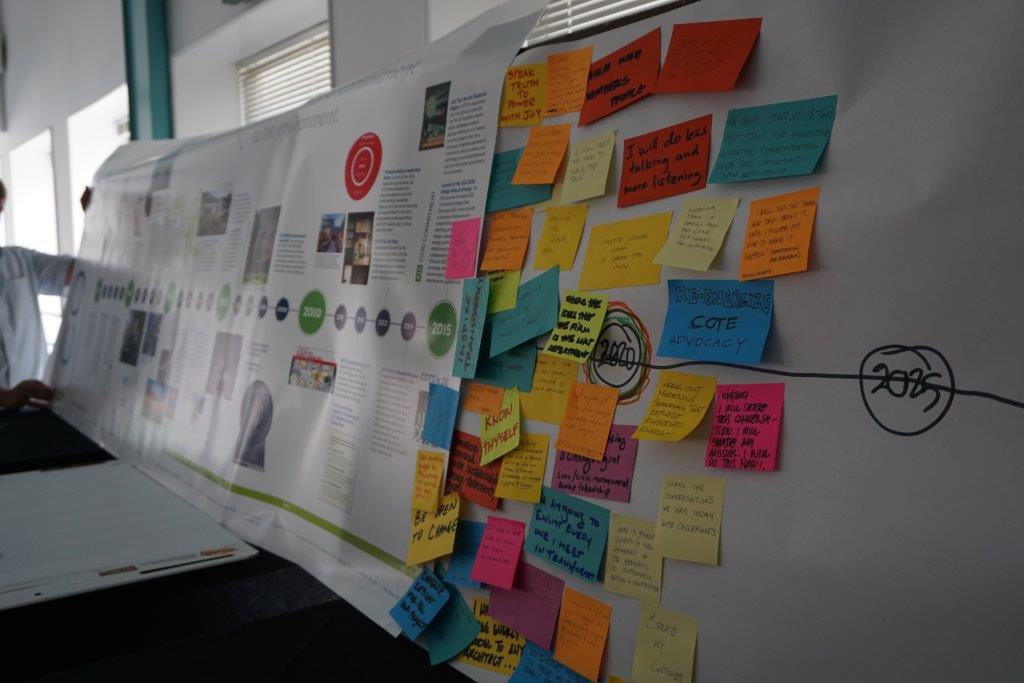Northern New England AIA COTE Leadership Summit
“We are on the threshold of the most significant change known to human history.”
- Bob Berkebile
On June 5, 2015, 100 leaders of the Northern New England AIA design community came together in Portland, Maine to discuss how building design can be a major leverage point for addressing global climate change and how the Northern New England design community can advance towards achieving the Architecture 2030 vision of carbon neutral buildings by 2030.
We were guided throughout the day by the compelling stories and experienced insight of Bob Berkebile, who with his firm BNIM has been pushing the envelope on green design and development since before the time of LEED certification. Bob is the founding chairman of the American Institute of Architect’s (AIA) National Committee on the Environment (COTE) and so it is fitting that he kicked off this regional AIA COTE Summit with words to inspire and incite us to take action.
Bob started the event with an evening lecture at the Portland Museum of Art and shared stories from his work in post-disaster environments. His experience shows that natural disasters provide opportunities for new community conversations and extraordinary change. For example, we heard about the City of Greensburg, Kansas that was devastated in a tornado and how Bob and his team brought the community together for conversations about what it was about Greensburg that they loved – what limited them - and what they wanted to create that would make it better. The result of these conversations was a city that was rebuilt following complete devastation to a thriving green city (the first city in America to make LEED Platinum its standard).
“The larger disaster,” he said, “is our limited thinking and the resulting failure of human systems everywhere.”
The trick, he explained, is to raise and address these important questions before nature informs us of our failures through natural disaster.
This executive summary is paraphrased from Bob Berkebile’s address given at the 2015 Northern New England AIA COTE Summit:
Former U.S. Treasury Secretary Hank Paulson has said that climate change is a much greater risk to this country than the economic crash of 2008. The science is clear that increasing amounts of greenhouse gas emissions are accelerating global climate change and further delay in addressing this critical issue is
reckless. But addressing climate change now brings great opportunities for redefining our economy, natural capital and human resilience.
Climate change provides the architectural community with the most exciting design challenge in human history. Through how we design, we can change the outcome. Buildings are the number one source of greenhouse gas emissions and therefore building designers hold the keys to a solution.
Now is the time for transformative change. Many great thinkers are saying that we are entering into a new age that is more sustainable and vital – the “Planetary Age” – but we must be aware that getting there will likely involve disruption.
We started down the path toward greener buildings with the introduction of LEED certification. The early assumption made by the design community was that broad use of LEED certification would change the building industry, which has proven to be true. However the industry-wide program required reducing LEED certification to doing less damage to the environment – not stopping the damage or adding new vitality. Extraordinary changes have occurred in the way we approach design because of LEED; it gave us a roadmap forward and stimulated innovations in design. New models of green building that are regenerative offer tangible promise that we can reach the goal of carbon neutral buildings by 2030.
The design community’s only major limitation to achieving carbon neutral buildings is our mindset. With a common view of what is important we can transform our industry and change the world. Let us make 2020 be the year of “perfect vision,” accelerating our path forward with clarity and certainty.
Now is the time for a significant course change in how we design and build; and this change must be transformative. People are frustrated with the old models and want a new approach. The design community can be the kamikazi (“divine wind”) that blows through and changes the game. With regenerative and loving strategies, design professionals are able to create stronger communities and a more sustainable world.


